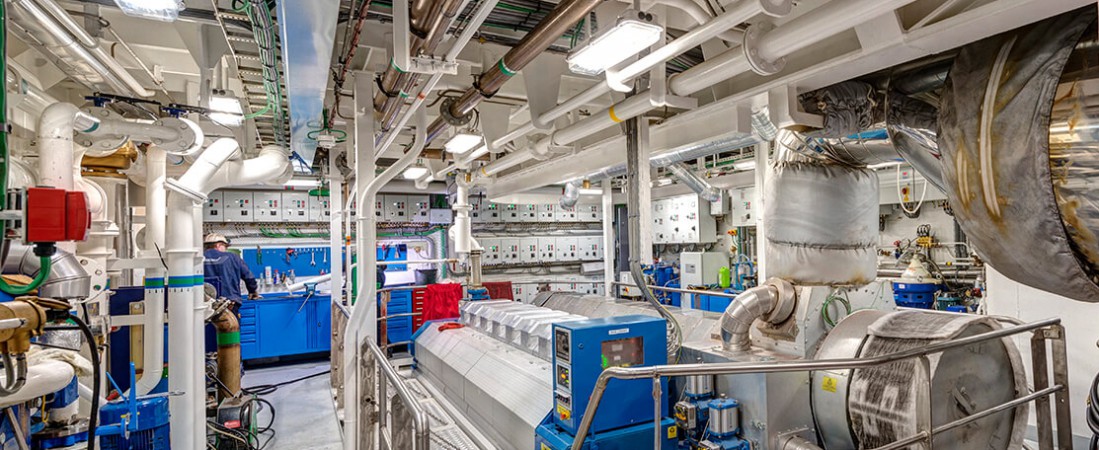
The same with other vessels, landing craft tank has the ship engine room. The only vessel that doesn't have the ship engine room is dumb barge because it doesn't have the engine to move by itself. The engine room is referred to the spaces for the propulsion machinery of the vessel. Though each vessel has its own engine room, the machinery necessary for operation is usually located in various spaces to increase vessel's safety and surviving change if there is any damage. Usually, the machinery included in the engine room is the main engine to stir the propulsion, generator, and several pumps.
Every vessel can has more than one engine room. In most cases, the ship engine room is the largest physical compartment for machinery spaces. The location of the engine room can be at the forward and aft of the vessel or port and starboard side of the vessel or may be simply numbered. The bigger the vessel the most likely it has more than one engine room. Usually, the engine room is located near the bottom at the end of the vessel because the main engine needs to be connected to the propulsion. Having the main engine at the end of the vessel near to the propulsion helps the builder and the buyer to save cost for the usage of the shaft. The farther the main engine, the longer the shaft line will be to connect the main engine and the propulsion.
As mentioned above, the ship engine room includes the machinery necessary for operations. Starting with the main engine that turns the propulsion to the vessel through the water, the engine room also covers the generator to provide the power of the vessel's electrical systems. The bigger the vessel, the more generator needed to supply the power to the electricity system. In several cases where the vessel has the boiler system, the vessel will have an alternate engine room which named boiler room. Other than the main engine and generator, an engine room also contains many smaller machinery such as air compressor, feed pumps, fuel pumps, and many others.
The ship engine room is identical with hot, noisy, dirty and also dangerous. Therefore, safety and ventilation are needed in the engine room. Usually, every vessel will also have a sea chest to connect the engine room with the fresh seawater tank to draw heat from the engine. using this method, the engine cooling will works from liquid to liquid heat exchangers. Furthermore, the engine room must have a ventilation to keep the engine room temperatures down to the acceptable limits. The ventilation can be in the form of unrestricted hull opening with the same size as the intake area of the engine itself. In addition, the ventilation should be able to provide intake air plus 1000 cubic feet per minute as the additional ventilation.
Dredgers are important machines used for excavation and land reclamation in water bodies. They come in different shapes, sizes, and types, depending on the specific purpose they are designed for. I....
Pilot boats play a vital role in ensuring the safety and efficiency of maritime transportation. These boats are designed to transport pilots to and from ships that require their expertise in navig....
Self-propelled barges are vessels that are designed to transport large quantities of cargo on inland waterways. These barges are propelled by their own engines, making them highly efficient and cos....
Barge/ Dumb Barge A barge is a flat-bottomed boat that is designed to transport goods or people on inland waterways or near-shore locations. Dumb barges, also known as unpowered barges, are t....